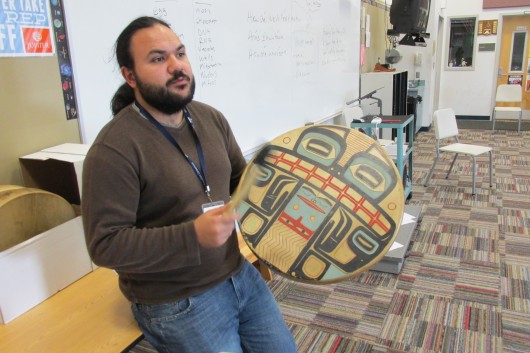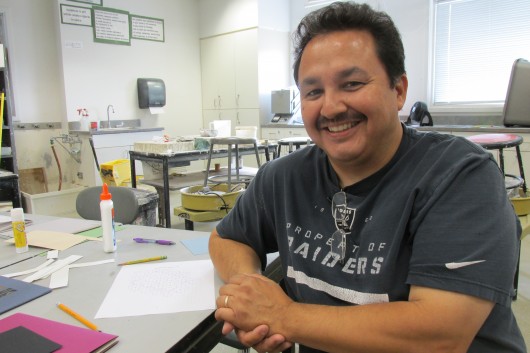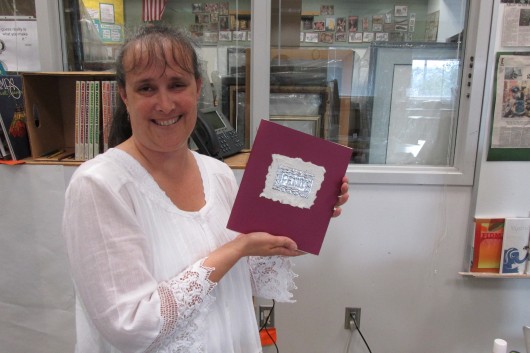How do you incorporate visual art into a history class? Or theater into a math class? Ketchikan public school teachers had the chance to answer questions like these in a two-week arts program called the Basic Arts Institute. It’s a training program held all over the state, and this is the first year it’s been in Ketchikan. Arts professionals taught local teachers about incorporating arts into their classrooms
Gerald Scarzella has taught math at Ketchikan High School for 11 years. He says he’s incorporated some drawing into his classroom. But he came to the Basic Arts Institute to learn how to incorporate other art forms into his algebra and statistics lessons.
“I think it’s going to engage some of those kids that are not really strong in math,” Scarzella said. “Make them realize, ‘Hey there’s some math in some of the things we do, even if it is art.'”
Scarzella is one of 23 Ketchikan teachers, and one Hollis teacher, participating in the institute. The Ketchikan teachers’ institute fees were paid for by the School District.
“We have science teachers, math teachers, language arts teachers, we have teachers from kindergarten all the way through high school,” said Ryan Conarro, an actor and drama teacher from Juneau. “And the idea is how can we use arts in any of those contexts to make a more dynamic learning environment and make the student successful?”
Conarro is teaching drama at the institute.
“We’ve been really focusing on one particular strategy called tableau,” Conarro said. “Tableau is a theater term for making a picture on stage with the actors’ bodies, in this case the students’ bodies. So teachers have been practicing how to encounter literature, science concepts, history, their own writing and performing it on stage in simple tableaus as a way to interpret it, to demonstrate their understanding or as a way to go deeper into the learning.”
Now, you might not think this could apply to math, right? Scarzella thinks maybe it can.
“Maybe trying to visualize some of the math terms or math concepts [using tableau] would be kind of cool.”
Another Arts Institute teacher here is Ed Littlefield. He teaches Tlingit culture and music, including drumming.
“People come and talk to me and they say, ‘Oh I’ve figured out how I can use this, or this.’ They’ve had these aha moments all throughout the two weeks,” Littlefield said.
The Basic Arts Institute is organized by the Alaska Arts Education Consortium, with help from local groups like the Ketchikan Area Arts and Humanities Council. Throughout the two weeks, teachers learn not just about art, but about brain science and how art can improve students’ performance. Karen Stomberg is an artist and educator from Fairbanks who helped organize the Ketchikan Institute.
“We’re looking at it two different ways. One is developing the teacher as an artist who is comfortable using the arts and developing them as a teacher who can use arts in the classroom,” Stomberg said.
Houghtaling Elementary School librarian Penny Ranniger says the institute helped her let go of insecurities she had about her own art skills.
“I think probably one of strongest points the teachers made is to silence our inner critic and just go with it,” Ranniger said. “And once you do that it’s so freeing because yours doesn’t have to look like the kid’s next to you who was born with the art gene.”
Incorporating music and drama into the classroom will be easier for some of these teachers than others.
“Yeah I’m a little nervous,” said Scarzella, the Kayhi math teacher. “I’m gonna take it a step at a time and try to figure out what’s gonna work. I’m not gonna be able to do it every day. Maybe once or twice a week try to incorporate something I’ve learned here and use it in the class. Baby steps.”
School starts back up on September 2nd. Parents, don’t be surprised if your children come home saying they learned music in their science class or drama in geometry.









